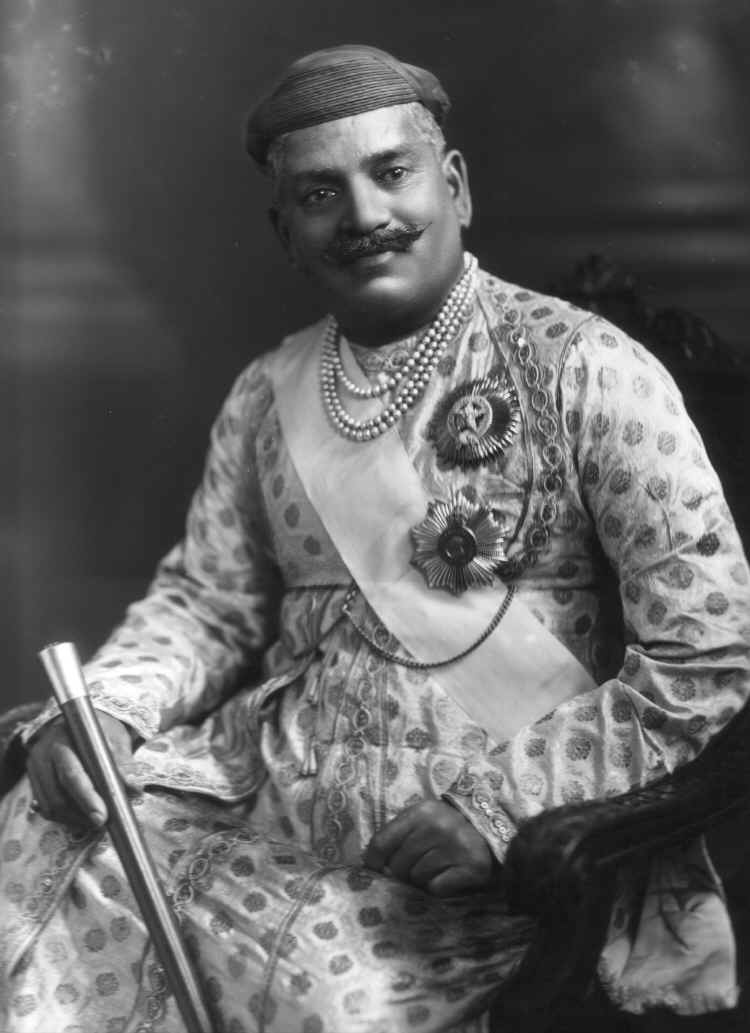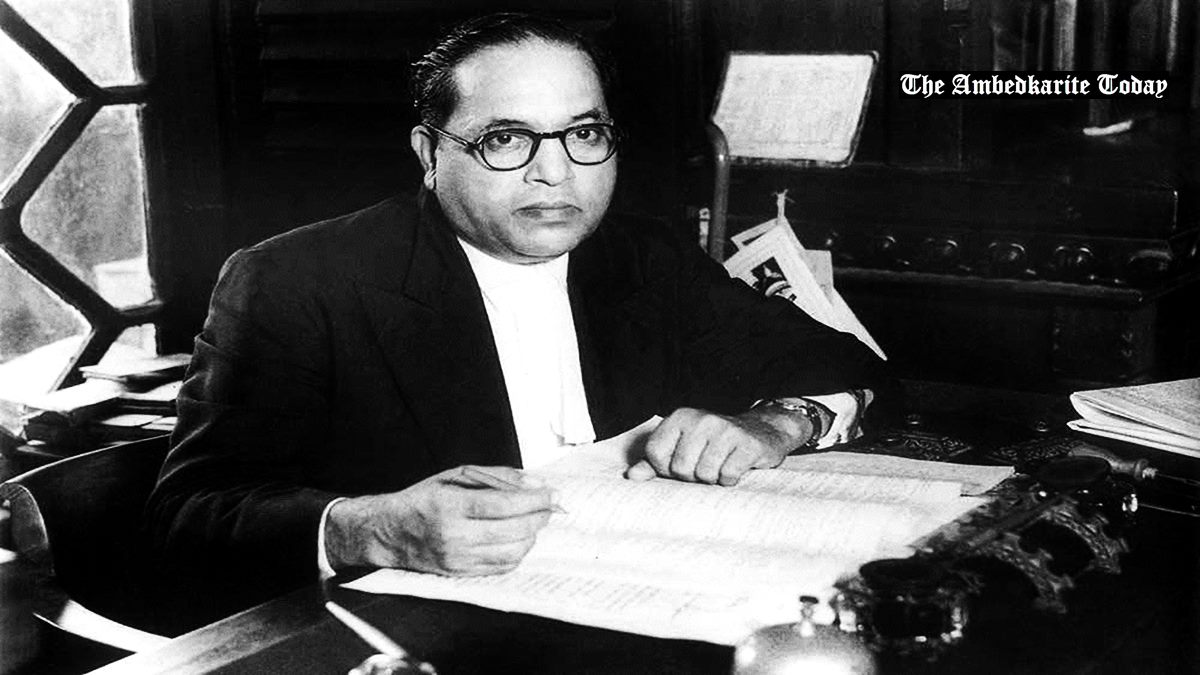He is one of the tallest leaders of modern India, a man who helped shape the very idea of our country and the vision of what we should stand for. But outside Dr B R Ambedkar’s stupendous contribution to India, there is another story that we ought to remember. This is the story of his rise to prominence, a journey marked by hardship, unthinkable prejudice, discrimination and pain.
Bhimrao Ramji Ambedkar was born in a Dalit family in the military cantonment town of Mhow, in Indore district, in the heart of India. The year was 1891 and Bhimrao’s father Ramji Sakpal was a subedar in the British Indian Army. A man ahead of his time, Ramji believed in the importance of education and enrolled his children in school. But, sadly, from the very start, Bhimrao and his young siblings had to face great discrimination.
This is the story of his rise to prominence, a journey marked by hardship, unthinkable prejudice, discrimination and pain
Caste prejudices were strong and untouchability was a reality even in a place like Mhow. The children were forced to sit separately from the rest of the class and the teachers too paid little attention to them. There is a well-known anecdote about how Bhimrao and his brothers could not even drink water freely. When they needed a drink, water would be poured from high above by a peon. If the peon wasn’t present for the task, they would simply go thirsty. Another time, when young Bhimrao was asked to solve a sum on the blackboard, the other children protested, claiming it would ‘pollute’ the blackboard.
After his retirement from the army in 1894, Ramji moved to Satara, in present-day Maharashtra. Three years later, the family moved to Bombay, where he enrolled in Elphinstone High School, the only Dalit to do so.

It is said that Krishna Arjun Keluskar, the Principal of Wilson High School and a prominent social activist, was once taking a walk in the Charni Road garden, when he came across Bhimrao Ambedkar, then a young boy, reading a book in the garden under a streetlight. Keluskar took Ambedkar under his wing and guided his education from then on.
The Dalits organised a grand function in Ambedkar’s honour to celebrate the fact that he was the first member of their community to matriculate
In 1907, Ambedkar passed his matriculation and took admission in the University of Bombay. The Dalits of Bombay organised a grand function in Ambedkar’s honour to celebrate the fact that he was the first member of their community to matriculate. It is at this function that Keluskar presented Ambedkar a Marathi book which he had authored titled The Life of Buddha, a book which would have a profound impact on Ambedkar in his later life.
The Life of A Buddha had been published as a part of ‘Gaekwad’s Oriental Series’, a massive translation project of India’s ancient texts undertaken under the patronage of Maharaja Sayajirao Gaekwad, the ruler of Baroda. Keluskar had worked on the project and hence knew the Maharaja well. On his recommendation, Ambedkar applied for a scholarship that the Maharaja gave to young students to study abroad. Kelusakar also put in a word with the Maharaja.

Maharaja Sayajirao Gaekwad was an exceptionally progressive ruler, who had a knack for finding the best talent. He had served as a mentor to Raja Ravi Varma, Aurobindo and to Dadabhai Naoroji. The Maharaja had also instituted a scholarship which enabled young men from ordinary families to pursue postgraduate studies at Columbia University in New York. The one condition was that they would return and work in the princely state of Baroda.
Palace guards had refused Ambedkar entry into the palace despite him having an appointment with the Maharaja
On Keluskar’s recommendation, the Maharaja invited the young Ambedkar to meet him at his palace on Malabar Hill in Bombay, but much to his surprise Ambedkar did not turn up. In the evening, as the Maharaja left in his carriage for his evening ride to Chowpatty, he saw a young man standing outside the palace gates. Apparently, the palace guards had refused Ambedkar entry into the palace despite him having an appointment with the Maharaja. Sayajirao promptly sanctioned a scholarship of Rs 50 to Ambedkar. This enabled him to enrol in the Graduate School at Columbia University in 1913.
‘The best friends I have had in my life were some of my classmates at Columbia and my great professors, John Dewey, James Shotwell, Edwin Seligman and James Harvey Robinson.’ – Dr Ambedkar in the Columbia Alumni News – 1930

Ambedkar spent three years at Columbia University from 1913 to 1916. He attended more classes than were needed by his course, including subjects like ‘Railroad Economics’. He passed his Master’s exam in June 1915, majoring in Economics as well as in Sociology, History, Philosophy and Anthropology. His thesis was on Ancient Indian Commerce. In 1916, he presented his second thesis titled National Dividend of India – A Historic And Analytical Study, for another Master’s degree. His mentor was noted American economist, Edwin R A Seligman, a professor at the college, who incidentally had also been a friend of Lala Lajpat Rai.
An untouchable, wherever he went in India, was a problem to himself and to others
In October 1916, Ambedkar enrolled at the London School of Economics (LSE), where he started working on his PhD thesis, but in June 1917, his Baroda scholarship ended and he was forced to return to India. Sadly, the return to India was not easy as Ambedkar himself wrote in his book Waiting For A Visa. Reflecting on his times. He wrote:
‘My five years of staying in Europe and America had completely wiped out of my mind any consciousness that I was an untouchable, and that an untouchable wherever he went in India was a problem to himself and to others. But when I came out of the station, my mind was considerably disturbed by a question, ‘Where to go? Who will take me?’

The terms of the scholarship from Maharaja Sayajirao Gaekwad required Ambedkar to join the Baroda service, and, in 1917, he was appointed Military Secretary to the Maharaja. Sayajirao offered to train Ambedkar in Public Administration, with the hope that one day Ambedkar would be the Finance Minister of Baroda State. However, while Baroda’s ruler was enlightened and progressive, the rest of his staff was not.
Office peons would ‘throw’ files at Ambedkar’s desk from afar so they wouldn’t have to come near him
Ambedkar’s short stint in the Baroda service was very difficult and humiliating. It is said that despite his success and the support he had from the Maharaja, office peons would ‘throw’ files at Ambedkar’s desk from afar so they wouldn’t have to come near him. Despite also being the Maharaja’s secretary, the servants at Sayajirao’s Laxmi Vilas Palace refused to serve him. None of the Hindu dharamshalas or lodges in Baroda agreed to offer him accommodation. Finally, a Parsi inn-keeper agreed to accommodate him in lodgings reserved for Parsis, under a fake Parsi name. However, he was found out, humiliated and thrown out of the inn. That same day, Dr Ambedkar resigned from the Baroda service and returned to Bombay.

On his return to Bombay, he tried working as a private tutor, an accountant and an investment consultant but failed as clients were reluctant to work with him due to his caste. In 1918, he found a job as a professor of Political Economy at Sydenham College in Bombay but the prejudice continued. Other professors at the college refused to share the water jug with him. Even tongawallas would refuse to ferry him, claiming that their tongas would get ‘polluted’ by his touch!
Even tongawallas would refuse to ferry him, claiming that their tongas would get ‘polluted’ by his touch!
Despite all these difficulties, Ambedkar completed his Master’s degree from the London School of Economics in 1921, with the financial assistance from the Maharaja of Kolhapur. He stayed in London between 1921-23 , and submitted his thesis The Problem Of The Rupee: Its Origin And Its Solution. The following year, he was called to the Bar by Gray’s Inn (an exclusive body of barristers and judges in London) and in 1923, he completed a DSc (Doctor of Science) in Economics. In 1927, he received his PhD in Economics from Columbia University.
Having triumphed over overwhelming hardship and prejudice, Dr Ambedkar now began involving himself in social and political activities to uplift Dalits in India. He went on to become the greatest voice of the community and emerged as one of the tallest leaders of India. He was also the architect of India’s Constitution and a man so astute that his words continue to inspire us today.
Courtesy- Live History Of India

